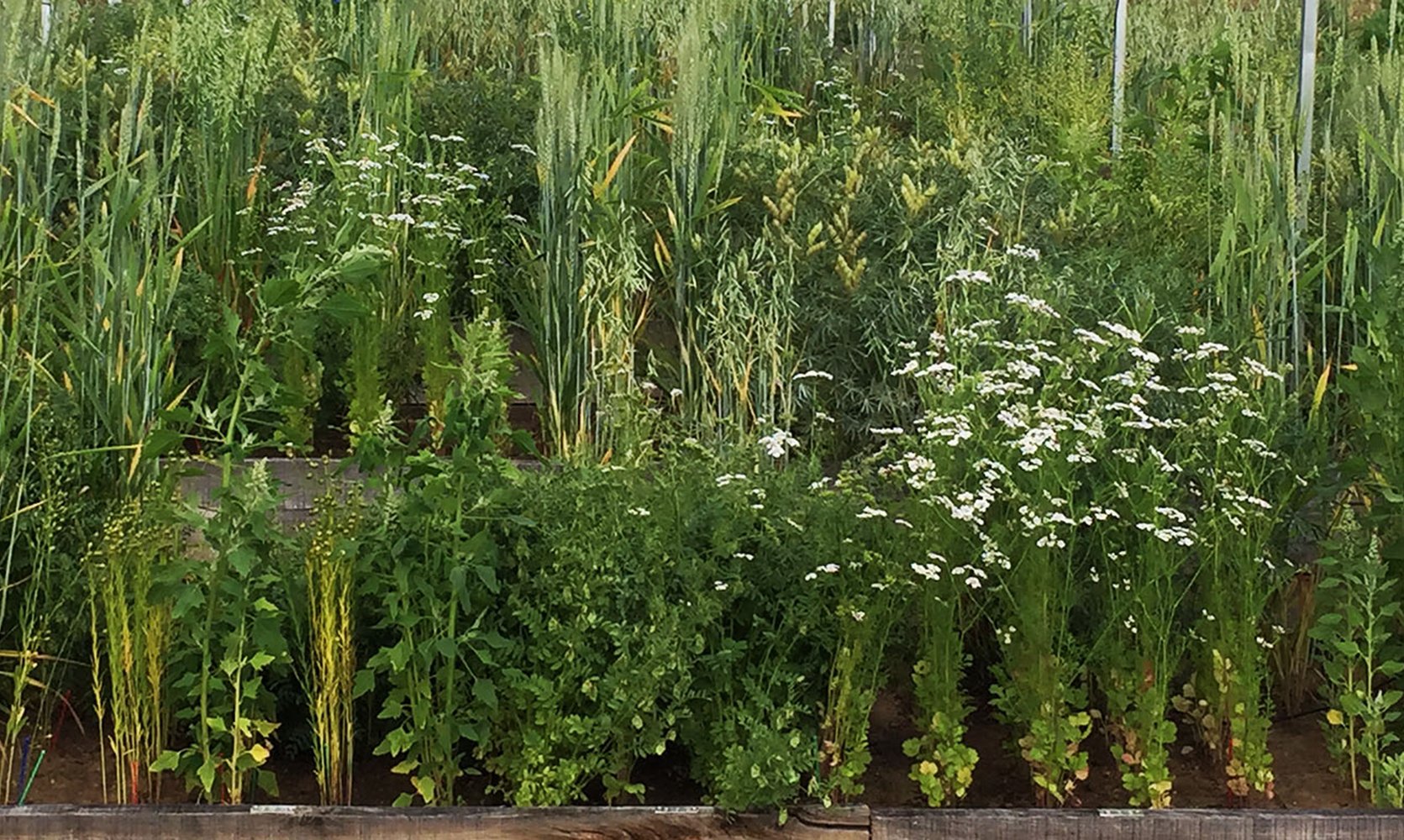It’s all in the mix: Diverse ecosystems are more efficient — it seems that this principle of nature can also be applied to the field, according to a study that documents. Thus mixed cultures of different crops can produce more yields than monoculture. By raising improved plant species and using specialized harvesting machines, mixed cropping could be feasible in the future, scientists say.
As far as the eye can see, only one crop grows: large-scale monocultures constitute modern agriculture. Standardization is practical because it simplifies many cultivation methods – but monotony also has drawbacks: the soil is poor on one side and pathogens can spread easily, since all plants are equally exposed. This is one of the reasons for the great need for pesticides in conventional agriculture. That is why the advantages of mixed farming are already used, especially in the cultivation of organic vegetables and in private gardens: rows of carrots, onions, lettuce and the like – several types of crops or varieties are planted side by side.
Is diversity worthwhile in this area?
A natural principle comes into play here: Ecosystems can function better and produce more biomass if biodiversity is large. The positive effect on plant productivity is already well known in the case of agricultural ecosystems: “Research in agricultural meadows has shown that meadows that are more diverse are more productive than those consisting of one or a few cultivated species,” says Christian Schöpp of Switzerland’s Federal Institute of Technology in Zurich. So far, however, there have not been any similar studies of arable farming. That’s why Schop and colleagues have now investigated to what extent mixed cultures also have a beneficial effect on growing plants in which seed yield is the main focus.
For this purpose, the scientists created two regions of experimental cultivation: one in Switzerland and the other in the dry and warmer Spanish province of Extremadura. For their experiments, they grew a mixture of two or four different crops. These were wheat, oats, coriander, quinoa, lentils, lupine, flax and a relative of rapeseed. These plants are alternately planted in parallel strips twelve centimeters apart. No pesticides were used in the experiments.
Comparison with seed yields for the same plant species in monoculture showed that even from a mixture of two species, they increased by 3 percent in Spain and by 21 percent in Switzerland. If researchers plant four species side by side, the additional yield is 13 and 44 percent in Spain and Switzerland. The researchers attribute the additional yield achieved to the impact of biodiversity. So it became clear that the diversity of these arable crops allows a better use of available resources and, above all, better natural control of harmful pathogens.
The end result is more seed yield
As the researchers also reported, the mixed culture also had a surprising effect: The plants form more leaves and longer stems than monocultures. In general, this led to an increase in biomass. However, the following applies: the investment in the plant parts of the plant tends to come at the expense of seed production. However, given the stronger overall growth, the advantage remains, Schup asserts: “In spite of everything, the mixed culture eventually resulted in higher seed production than in monoculture.”
According to the researchers, the effect that plants invest more energy in building plant biomass could also be a side effect of breeding the varieties used. Because their yield is only improved by growth among their peers. Conversely, it appears that higher yield potential could be better exploited with seeds adapted to mixed crops, the scientists say. However, at the moment, there are no seed producers that offer varieties intended for use in mixed cultures. So the researchers now plan to develop suitable plants or seeds. “We would like to repeat our experiments with these self-produced seeds to see if selection in a mixed culture pays off in the truest sense of the word,” says Schup.
In order for mixed culture to prevail in agriculture, another important aspect is also important, the researchers in conclusion emphasize: machines are necessary that can simultaneously harvest different crops and separate the crop. “Machines like this already exist, but they are still an exception and expensive, perhaps because they are so little in demand,” says Schop. By combining improved seeds with the right machinery, mixed cropping could eventually be feasible for many farmers, the agricultural researcher believes.
Source: Swiss Federal Institute of Technology Zurich, specialized article: Nature Plants, doi: 10.1038/s41477-021-00948-4

“Alcohol buff. Troublemaker. Introvert. Student. Social media lover. Web ninja. Bacon fan. Reader.”







More Stories
Intelligence and Alzheimer's disease: How fit is your brain? Your eyes guide her
Can you feel climate change? This installation visualizes science
This vaccine eliminates all viruses